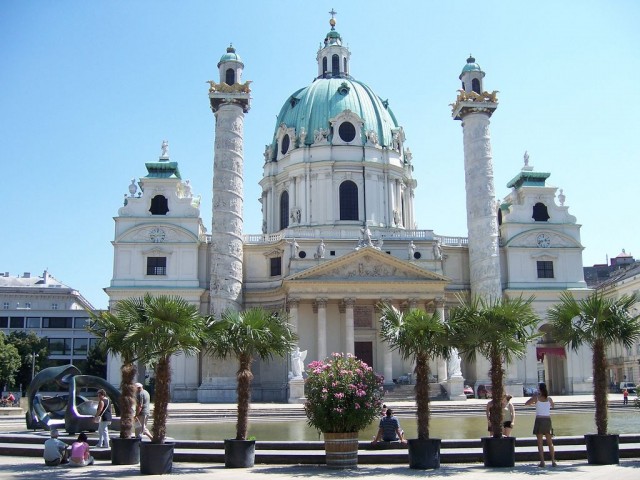
City square Karlsplats (Karlsplatz) – basic transport knot of the capital of Austria. It is called in honour of church Karlskirkh that is in a southeast part. After modernisation in the 1890th years, the bed of the river Vienna has been changed, the area has caught a modern look and the sizes.
Temple Karlskirkh (Wiener Karlskirche).
This temple has received the name in honour of the Italian priest – sacred Carlo Borromeo. Milan archbishop Carlo Borromeo during plague, despite of the highest church rank left on small town streets. It helped unhealthy, personally made rituals over the dying. After Borromeo’s death has been canonised.
When awful epidemic of plague was carried by across Austria, Charles IV Habsburg has given a vow to build the temple and to intend it to sacred Charles – to the deliverer. Work on the project have charged to the designer Johann Bernhard Fischer von Erlakh. Greatness glorification Gabsburgov and gratitude to Sacred Charles became the main thoughts of the project Karlskirkh.
Construction of church lasted 24 years. Its area – 80 on 60 m; dome height – 72 metres. The building is an outstanding prototype of baroque, but in its look lines of other styles are looked through also.
Before an entrance in church there is a small reservoir. To the temple the wide ladder conducts, on each side it there are figures of angels. The angel on the right symbolises the Old Testament; an angel at the left – New. The portico pediment over an entrance is decorated with a bas-relief of work of Giovanni Stanetti – «A victory over plague». On a structure pediment – the Sacred Charles’s uplifting prayers in disposal of plague sculpture. From 2 parties from a portico two monumental columns topped with helicoid bas-reliefs are established. On them it is possible to behold scenes of life of Carlo Boromeo. Finish facade composition two towers. In their bases there are small lateral entrances in a cathedral building.
Snutri the building is decorated with the frescos executed in 1725-1730. The most part of frescos known Johann Michael Rottmayr’s brushes belong. In work on frescos participated also: Sebastyano Richchi and Daniel Gran; Martino Altomonte.
The central composition of a head altar represents Sacred Charles’s rise to paradise. There are some pictures and in lateral chapels of the temple. If to rise up on the lift, from a special platform it is possible to make out plots of frescos of a dome list. It is possible to rise even above, on a ladder on foot – to a light lamp. From this observation deck guests admire a panorama of Vienna.
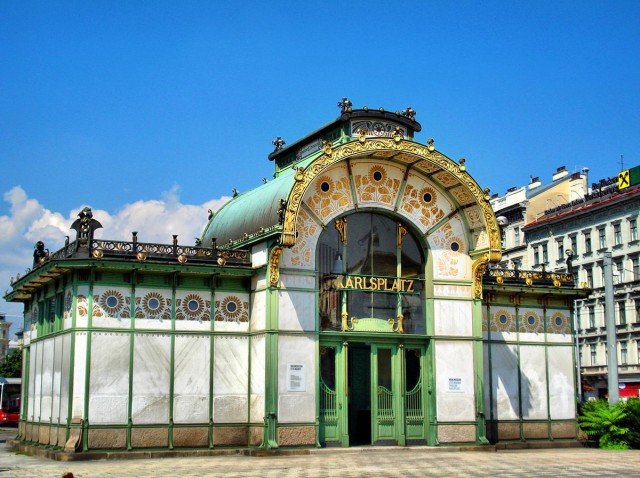
Otto Wagner’s pavilions.
Designer Otto Wagner worked over the rebuilding plan of Vienna in 1890. But the authorities of the small town have approved only projects of the Vienna steel road (S-Bahn). «Otto Wagner Pavillon» – the 1st pavilion of the city steel road. Have opened it at station Karlsplats in 1899. Elevated pavilions of station are ornated by flower ornaments of work of Joseph Olbrich, executed in modernist style.
In 1976-1981 reconstruction of the Vienna underground was carried out. The underground part of station Karlsplats too has endured configurations, but builders did not begin to alter ancient elevated pavilions. Under the pressure of the public it has been decided to restore them and to transfer on other place. These constructions have lost practical value, but till this moment they are fascinating as tourist objects. In one of pavilions there is a cafe, another belongs to a museum.
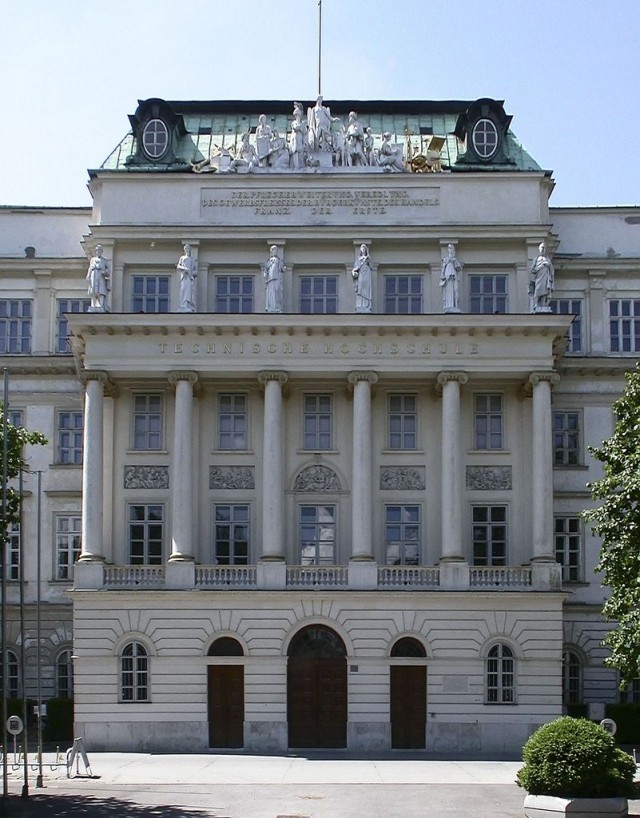
Vienna Technical institute (Techni sche Universitat).
It has been based in Vienna under Franz’s II decree, in 1815. As a prototype for Polytechnical institute of that time the Parisian Polytechnical school has served. In 1975 establishment has received the institute status. As this moment at different faculties of "Techni sche Universitat" study 16 тыщ students.
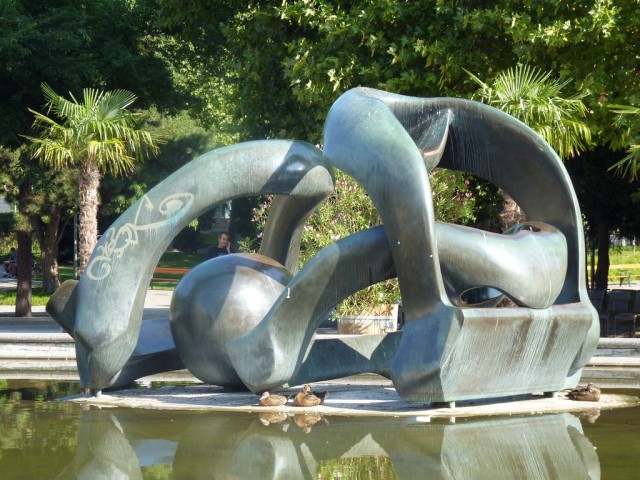
Cкульптурная group «Hill arches» Henry Moore’s (Henry Moore) (Hill Arches).
Before polytechnical institute in 1862 the park has been broken. It have christened – «Ressel’s Park» (Resselpark). The title has been given in honour of the inventor from the Czech Republic – Joseph Ressel who has finished this educational institution. Ressel has become famous for an abundance of basic inventions; the main thing from them – the rowing screw. In 1829 the Czech inventor has built the 1st spiral the steamship "Tsivetta". By means of the motor of new type the vessel could gather speed to 6 knots.
At reconstruction of the underground and the park has undergone transformations. The project of reconstruction of park was selected on competition; the group of architects of Denmark has overcome in it. To the Danish specialists have been charged both park expansion, and its detailed re-planning.
Between the temple Karlskirkh and park Ressel as a connecting link have made the roundish pool. On each side it Henry Moore’s (Henry Moore) popular sculptural group has been established. The British architect called the composition «The hill arches» (Hill Arches).
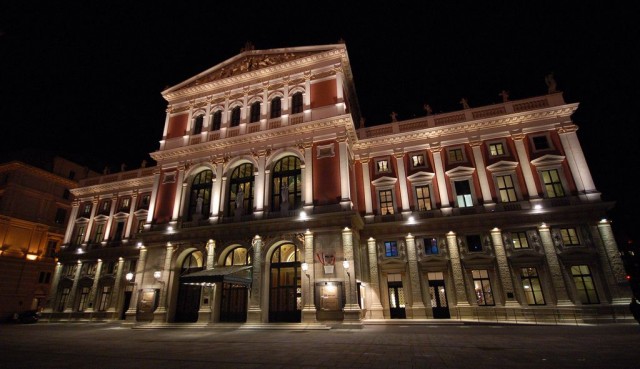
Vienna Musical society (Wiener Musikverein).
Now the territory of park is broken into three parts in the form of ellipses. In park cost a monument to Joseph Ressel and a monument to the inventor of the sewing machine – to Joseph Madershperger. And in Ressel-park the monument is established to the stately composer – to Johannes Brahms. This statue of work of Rudolf Vayer has been created in 1908. Opposite to Ressel’s park there is an entrance in the Vienna Musical society (Wiener Musikverein).
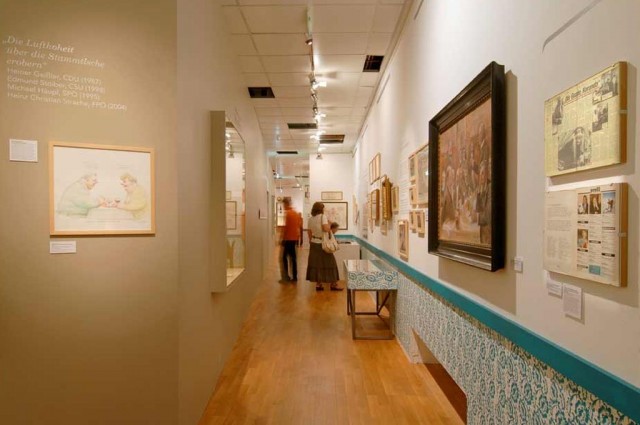
Museum Karlsplats (Wien Museum Karlsplatz).
It called the Historical museum of Vienna (Historisches Museum der Stadt Wien) since day of creation – in 1887 – and till 2003. In an exposition of a museum all history of the small town – from pioneer settlements is tracked down. Archaeological values are stored in the Wien Museum Karlsplatz collection from the Stone Age; tool of various eras; stained-glass windows of a cathedral of Sacred Stephane; pictures of an era of baroque. There are in an exposition subjects from camp of Romans – Vindobona; documents and artefacts of the period of the Babenbergsky dynasty. The most part of meeting is devoted to house history Gabsburgov. In the middle of meeting of the XIX century: art standards bidermayer and pieces of furniture; Klimt’s cloths and Pricker, Richard Gerstlya. In a museum pictures of known composer Arnold Shyonberg are exposed. Reconstruction of the flat of Franz Grillpratser – the known Austrian poet is presented to guests.
Here the big collection of a suit is collected: man’s, female, children’s clothes; footwear and stocking; ornaments and other accessories. Many exhibits are taken from modern life of Vienna. From more than 20 тыщ collection subjects the significant part of exhibits belongs to the period of the XIX-XX centuries. Exhibits of a museum can be beheld also at an exhibition in the Layntssky zoo (a country house "Hermes"), on places of excavation, in museums flats of figures of arts of Vienna.
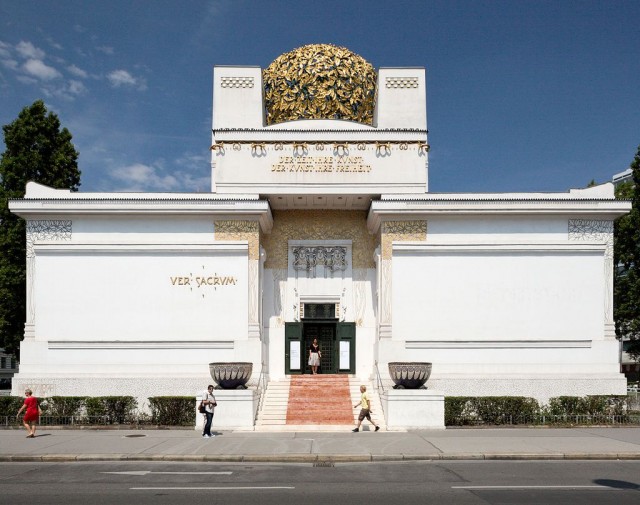
"Setsession" (Secessionsgebaude) – showroom.
In the beginning the building belonged to association of painters under «Secession» title. This title has been given to association of young painters after separation of creative group of 19 people from the Union of painters of Austria. There was it in 1892. Gustav Klimt has headed the association "Setsession". The hall has been constructed in 1898 – designer Joseph Olbrich operated the project. Olbrich’s style – style of the Vienna modernist style – for years forward has received the title: «Secession».
The gold openwork dome of a structure of showroom is visible from far away. Wreaths in a joke call it – «gold cabbage». (In fact the surface of a dome consists of three тыщ gold leaves of laurels). The pediment is decorated with the gold slogan of creative association: ««Time – its art, and to art – freedom». At the end of XVIII – the beginning of the XIX centuries members of association let out the magazine – «Spring sacred» (Ver Sacrum). The magazine title is immortalised by the same gold signs on a white wall.
On a structure facade – ornaments of work of Olbrich with images of owls; the heads of Jellyfishes symbolising creativity. East wall has Mark Antonija’s harnessed by bronze lions the chariot.
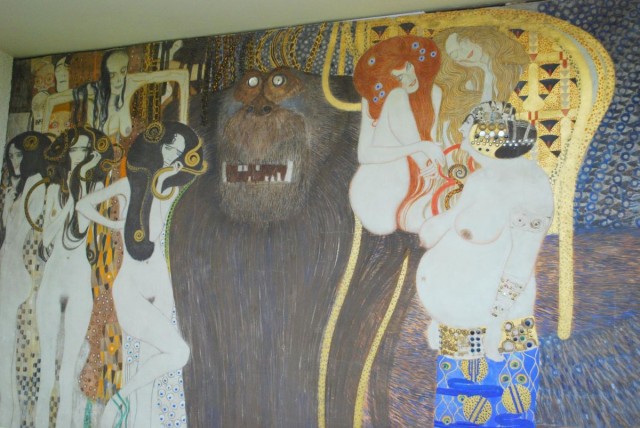
Gustav Klimt «the Betkhovensky frieze» (Beethovenfries), piece
In 1902 the 14th exhibition devoted to stately Beethoven here was carried out. Architect Max Klinger to its opening has presented the latest work – Beethoven’s sculpture. The composer has been represented by Klinger in the form of a deity. Gustav Klimt has written own known cycle of a panel «Betkhovensky frieze» (Beethovenfries) for an exhibition. This cycle has been conceived as an embodiment of the last symphony of Beethoven. The frieze was inaccessible to public for many years. Exclusively in 1986 this lot of work in the area of 70 sq.m, has been restored and again became available to guests.
After death of leading members of association «Vienna Setsession» and monarchy falling Gabsburgov the creative alliance has broken up. In World War I in a hall the military infirmary was based. In World War II of halls has been very destroyed. Revival of the Union of free painters left in 1945. Recovery operations in "Setsession" lasted till the end of the 70th years of the XX century.
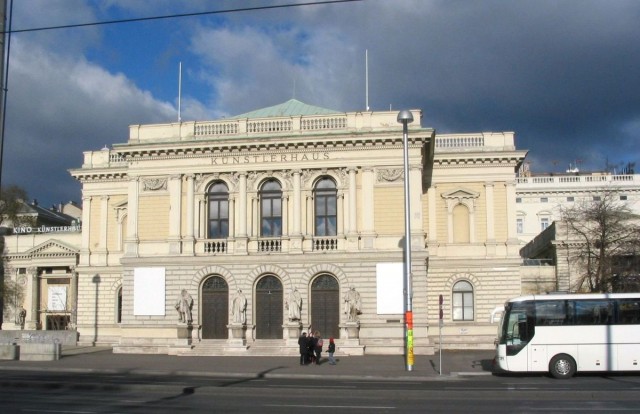
The house of the artist with the exhibition centre and a cinema hall (Kunstlerhaus)
Karlsplats in the north borders on the House of the artist (Kunstlerhaus) (the neorenaissance construction, 1865-1868) where exhibitions of a statue, painting, architecture and applied art are held. Since 1947 the cinema House here works. On the square still there is an old building of showroom (Kunsthalle Wien) and a concert hall of Musikverein.
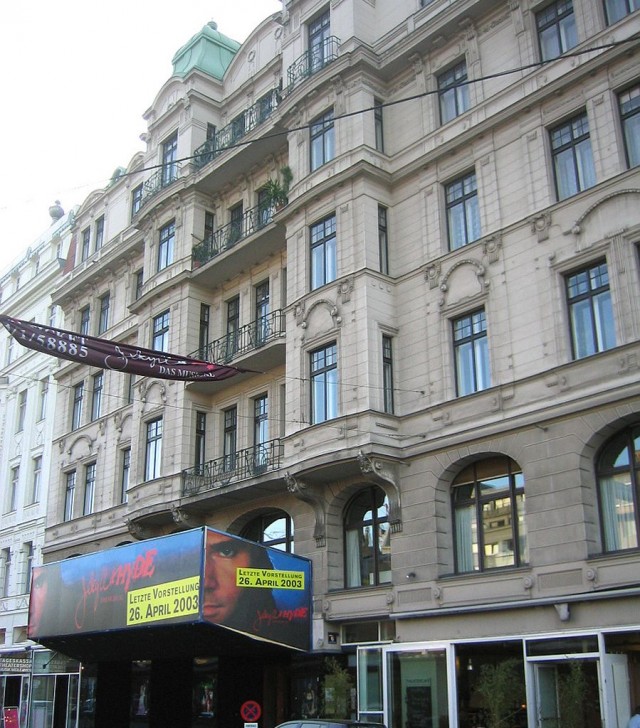
An theatre – дер – Wines (Theater an der Wien).
And if to pass a little further from Karlsplats Square (Karlsplatz), it is possible увдеть An Theatre – дер – Wines (Theater an der Wien). Literal translation of the name: «Theatre on the river Vienna». A building have built in 1801 – it has perfectly remained up to now. Has based this theatre Emanuil Shikaneder. In this building stately Ludwig van Beethoven in 1805 stayed – it worked then over "Fidelio". On a scene of An-der Wines passed performances of troupe of the Vienna State opera after the completion of the 2nd World War.
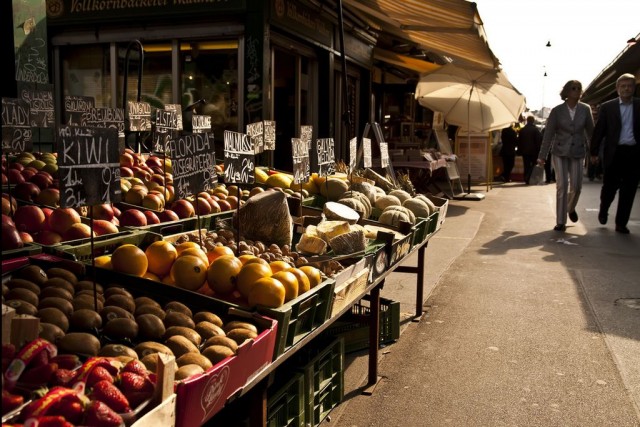
Nashmarkt market (Naschmarkt).
Нашмаркт – the largest Vienna market on a site of boundaries Karlsplats and an exit from the Kettenbryukengassa underground. Works daily. Here it is possible to get the freshest products and spices from all over the world. The name "Naschmarkt" has some versions. The word is many translate, as «The market of delicacies». In old Vienna there was a large quantity of the markets. Trade rules in the Middle Ages were rigid – the dealers caught on deception, put in a section and dipped in waters of Danube.
This known market is adjoined by (Flohmarkt) – the "flea" market. The large quantity of subjects of old times can be beheld on its motley ranks. Clothes and footwear, life subjects, ancient books – all this can be got on «Flohmarkt». In the middle of dealers there are Russian, Asians and radical inhabitants of the capital. The bargaining is welcomed! Under the market the river Vienna now concluded in a pipe flows. It names of streets, boundaries the market – Linke Wienzeile and Rechte Wienzeile costs with which also speak.
Nearby to the booming market the film museum «Third person» (Dritte Mann Museum) has settled down. It is a personal museum. Posters are stored in it and cards with autographs; soundtracks and episodes; 1st edition of the known novel of Graham Green. In a museum Anton Tsiter’s composition sounds.
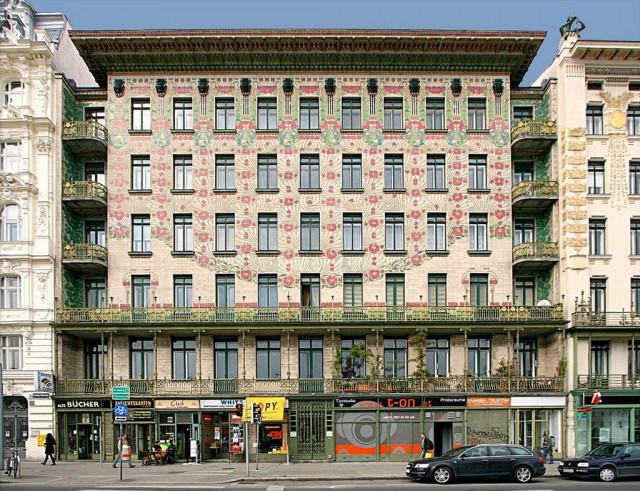
The house with a majolica (Majolikahaus) on Linke Wienzeile
Two houses on Linke Wienzeile entice attention, as standards of an era of the Vienna modernist style. They were projected by Otto Wagner. It worked for own means and was free in creativity. One house is decorated with roundish medallions from palm leaves on Kolo Mozer’s sketches. Its frieze, a ladder, an openwork shod lattice of the lift are fascinating also.
The house with a majolica (Majolikahaus) is decorated with mayolikovy flower panels made in 1899. On a structure frieze – the unique lion’s heads.
Karlsplats (Karlsplatz)
